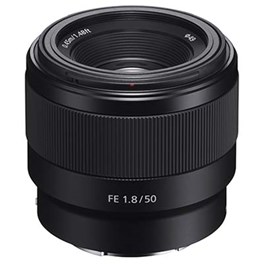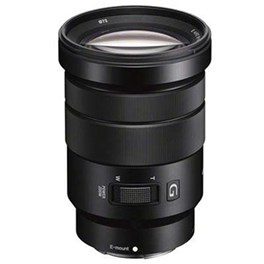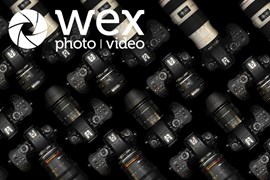
Welcome to our list of 10 affordable lenses for Sony users. No matter what Sony camera you’re using, we can all use more cheap lenses in our lives, and whether you shoot photos or video (or both), there are some terrific options to add to kit bag without lightening your wallet too much.
Our list includes two types of Sony lenses – those that fit both full-frame and APS-C cameras, and those that only fit Sony’s crop-sensor APS-C range. We’ve referred to the former as Sony FE lenses, and the latter as just Sony E, so it should be simple to tell at a glance which is which. Bear in mind that while the full-frame lenses will fit the APS-C cameras, they will incur a 1.5x crop factor, and may not balance particularly well. The A7, A9 and A1 cameras are all full-frame, while the A6000 cameras have APS-C sensors, so different lenses will be suited to different users. The vlogger-friendly ZV range, confusingly, has both an APS-C camera (the ZV-E10) and a full-frame (the ZV-E1).
We’ve ordered our list by price, starting with the cheapest – and everything on our list is available for less than £430 at the time of writing. So, what’re you waiting for? Time to get your hands on some cheap Sony lenses!
Quick Navigation
10 Affordable Sony Lenses
Sony FE 50mm f1.8 Lens
The Sony FE 50mm f1.8 Lens is designed for photographers and videographers looking for a fast, full-frame prime. Weighing in at less than 192g, this lightweight, high-performance lens features a new optical design and delivers all the benefits of a wide aperture prime lens: beautiful, crisp imagery with smooth, circular bokeh for the out-of-focus areas. For extended durability, the lens is built with a solid metal mount.
£159.00 View
Pros:
- Very lightweight
- Consistently good central sharpness
- Direct Manual Focus feature
Cons:
- Focusing not completely silent
- Not weather-sealed
Whoever said that full-frame Sony lenses always have to be expensive? This nifty-fifty for Sony FE is one of the cheapest lenses the firm has on its books, and it’s an ideal walk-around lens for day-to-day shooting. While it’s not as fast as an f1.4 lens, naturally, having f1.8 is still useful for low light and shallow depth of field, and having a lens that weighs just 186 is no bad thing either. The autofocus is fast and reliable (though video shooters should note that it isn’t totally silent), and there’s also the opinion for Direct Manual Focus, which makes it easy to make manual fine-tune adjustments to focusing after AF has done its work.
On APS-C Sony cameras, this lens delivers an equivalent focal length of 75mm. Together with its f1.8 aperture, this makes it a pretty credible portrait lens, at a fantastic price.
Sony E 16mm f2.8 Pancake Lens
The Sony E16mm f2.8 Lens is a light, low-profile pancake lens that fits comfortably on Sony's APS-C E-mount cameras, whilst maintaining the slimline look and slipping easily into your pocket. Great for everyday shooting, this 16mm lens contains high-quality optics including a 7 blade circular aperture for beautiful defocus effects and an aspheric surface for excellent contrast and sharpness. The lens features direct Manual Focus with a non-rotating focus ring during Auto Focus, ideal for precise, comfortable adjustments. The Sony 16mm f2.8 Lens is compatible with the optional VCL-ECU1 ultra-wide converter and optional VCL-ECF1 fisheye converter.
£189.00 View
Pros:
- Incredibly slim
- Very light
Cons:
- Sharpness lags in corners
- Need to stop down for best results
A slimline lens for APS-C Sony cameras (giving a 24mm equivalent focal length), the Sony E 16mm f2.8 Pancake really does live up to its name. When mounted, it barely protrudes more than a body cap, and it weighs just 67g. You might assume, given this information, that the lens is entirely plastic, but there is at least an aluminium trim to make it feel a little more premium. There are barely any external controls, just a non-rotating focus ring that supports Direct Manual Focus. This is one of the simplest lenses you can buy.
Dating back to the early days of Sony’s mirrorless system, this lens isn’t as sharp as those that have come later, particularly when used wide open. It’s best to stop down to f5.6 or so for the crispest results, and things consistently tend to look much better in the centre than in the edges or corners.
Lensbaby Sol 45 Lens for Sony E
The Lensbaby Sol 45 45mm fixed f/3.5 is an easy to use lens that creates a tack-sharp circular area of focus surrounded by dramatic blur and smooth bokeh. Featuring an 8.5º area of tilt, users can select the area of focus by titlting the lens, whether you are shooting on a full frame or APS-C sensor camera. Twisting the lens engages a centre-locking system so users can the lock position for quick and easy focusing.
£199.00 View
Pros:
- Dramatic, creative blur effects
- Intuitive to use
- Nicely compact
Cons:
- Effect won’t be for everyone
Sharpness isn’t everything. Photography is a creative pursuit at heart, and lenses like the Lensbaby Sol 45 allow you to get very creative indeed. It uses an 8.5º tilt mechanism to allow the user to create a small area of pin-sharp focus, surrounded by dramatic and artful blur. The powerful selective focus effect is immediately striking, especially for portraiture, though once you get the hang of it, a Lensbaby can be used for all sorts of different types of images.
Not everyone is going to like the Lensbaby Sol 45’s effect – it’s definitely advisable to take a look at some sample images before you buy to check that it’s something you want to work with. If it is, this tidy and compact lens can provide hours of out-of-the-box shooting fun, and potentially help create some of your most memorable and distinctive images.
Sony E 55-210mm f4.5-6.3 OSS Lens - Black
The Sony E55-210mm f4.5-6.3 OSS Lens with Sony E-mount features a 3.8x zoom range, optical SteadyShot image stabilisation and smooth, quiet autofocus for both still and HD movie shooting. The lens is suitable for wildlife and sports photography, as well as for all-purpose shooting. The high-performance optic has two aspherical elements for excellent optical performance and a 7 blade circular aperture for lovely defocus effects. Optical SteadyShot image stabilisation within the lens delivers crisper, clearer handheld shooting at all zoom settings. Designed for APS-C size Sony E-mount CSC's.
£229.00 View
Pros:
- Generous telezoom range
- Light and compact
- Stabilised
Cons:
- No weather sealing
In case you thought all cheap lenses were prime lenses, here’s a highly affordable telezoom for Sony’s APS-C E-mount cameras. Delivering a focal range equivalent of 82.5-315mm in full-frame terms, the Sony E 55-210mm f4.5-6.3 OSS provides a great deal of reach without weighing down your setup too much. It also has Sony’s optical stabilisation on board (Optical SteadyShot, or OSS), which means it’s significantly easier to get sharp shots at the tele end of the lens.
The autofocus response in this lens is nice and quiet, as well as fast and accurate. We also like the aluminium finish on the barrel, which makes the lens feel just a little more premium than ones that are all-plastic. One thing to be aware of though is that the Sony E 55-210mm f4.5-6.3 OSS is not weather-sealed, so be cautious about the conditions in which you use it.
Tamron 35mm f2.8 Di III OSD Macro Lens for Sony E
The Tamron 35mm f2.8 Di III OSD Macro Lens for Sony E full-frame camera systems is a standard wide-angle lens perfect for everyday photography. With the aim of introducing more people to working with fixed focal lengths; this lens masterfully balances stunning image reproduction and outstanding image sharpness. The 35mm f2.8 delivers high-quality images while retaining the same filter size of 67mm as the other lenses in the Tamron Sony FE series. Additionally, it is part of a range of highly practical lenses that allow photographers to enjoy the photographic expression provided by wide-angle lenses.
£239.00 View
Pros:
- Close focus and 1:2 macro reproduction
- Crisp images even when used wide open
- Weather-sealed build
Cons:
- Some noise when focusing
- Other lenses focus faster
When you’re on the hunt for affordable lenses, it’s always worth looking at what third-party manufacturers have to offer. Tamron in particular has a well-deserved reputation for crafting terrific affordable lenses, often doing things that the manufacturers themselves aren’t doing. The Tamron 35mm f2.8 Di III OSD Macro gives Sony users high-quality close-ups for an incredibly cheap price – with a 1:2 reproduction ratio, it reproduces subjects at half life-size on the sensor, and it can focus at distances as close as 15cm. Sharpness and contrast really are excellent, and the lens continues to produce terrific results even when used at its maximum aperture. The weather-sealed body also means you can use the lens outdoors with impunity.
With a 35mm focal length, this also doubles up well as a general photography lens. Bear in mind that its autofocus does make some audible noise, and isn’t quite as quick on the draw as similar lenses like Sony’s 35mm f1.8.Laowa 4mm f2.8 Circular Fisheye Lens for Sony E
Designed to be compact and lightweight, the Laowa 4mm f2.8 Circular Fisheye Lens packs a huge 210° angle of view and a wide, bright and fast f2.8 maximum aperture. This lens is ideal for those who want to get creative with the way they can portray the world. The wide and sometimes distorted nature of the fisheye lends itself to street photography and often, skateboarding videos. Equally, the images taken can be "de-fished" and with this and the f2.8 aperture, this lens makes for the ideal astrophotography lens. As well as this, you can capture stunning 360° panoramas with just 2-3 shots!
£239.00 View
Pros:
- Premium all-metal build
- Striking, distinctive fisheye images
- Excellent optical quality
Cons:
- Composition can be challenging at first
- Extreme effect won’t be for everyone
Venus Optics has won a lot of fans for its distinctive, unique lenses, available for a host of mirrorless mounts. The Laowa 4mm f2.8 Circular Fisheye is one such lens – it’s not right for every shooting situation, or indeed every shooter, but its arresting circular fisheye images are a great way to do something different with your APS-C Sony camera.
The optical quality of the lens is first-rate, and the short close-focusing distance means you can do what fisheyes do best and create extreme, exaggerated close-ups. Be warned though – it can take some practice to learn to compose with this lens, and it’s likely that your first few images will include a few unwanted feet, a few glimpses of your own head, and potentially even your fingers operating the camera body. With practice, though, you can get completely unique results using this lens.
Sigma 30mm f1.4 DC DN Contemporary Lens for Sony E
A wholly versatile lens, the Sigma 30mm f1.4 DC DN Contemporary Lens exhibits an array of advanced and modern technology that helps to produce outstanding image quality. The lens is equipped with an intricate arrangement of lenses that is complemented by a powerful autofocus system and a high level of flexibility available only by its maximum f1.4 aperture diaphragm.
£319.00 View
Pros:
- Great price for f1.4
- Effective stepping motor autofocus
- Excellent sharpness
Cons:
- Not weather-resistant
Sigma’s “DC” lenses are designed specifically for APS-C cameras, and as such are smaller and lighter than their full-frame counterparts. The Sigma 30mm f1.4 DC DN Contemporary balances brilliantly on Sony’s E-mount A6000 cameras, providing the shooting flexibility of an f1.4 aperture for a knock-down price. Great in low light, it delivers exquisite sharpness across the frame, with excellent control of chromatic aberration.
The focusing of the lens is fast thanks to the stepping motor autofocus – given how fast the A6000 cameras can focus, this is excellent news. The 45mm equivalent angle of view provides a fairly naturalistic perspective that’s great for street photography, and the nine-bladed aperture diaphragm produces brilliant bokeh. One thing to be careful of – the lens isn’t weather-resistance. Otherwise, there’s not much to criticise here, and any user of APS-C Sony cameras should definitely think about snapping this one up.
Samyang AF 75mm f1.8 Lens for Sony E
Weighing in at just 230g, the Samyang AF 75mm f1.8 is the perfect portrait and event lens, providing excellent performance and versatility despite its size.
£342.00 View
Pros:
- Affordable portrait lens for full-frame
- Outstanding sharpness for the price
- Nice and lightweight
Cons:
- Sony’s own lenses focus faster
- No weatherproofing
Portrait lenses can often get quite expensive, so if you’re looking to shoot portraits on Sony gear and you’re on a budget, the Samyang AF 75mm f1.8 should be a priority lens to acquire. In a flattering, portrait-friendly short telephoto focal length, the Samyang AF 75mm f1.8 is a brilliantly sharp lens, and the f1.8 aperture is great for throwing out backgrounds. It’s not quite as razor-thin a depth of field as f1.4 or f1.2, but it’s more than enough for great people pictures.
Sony’s own portrait lenses consistently focus a bit faster, but the autofocusing on the Samyan 75mm is still very good – and it’s not like you desperately need the extra speed on a posed portrait shoot. One thing that’s also welcome is how small and lightweight this lens is – at just 230g, it’s not much of a burden to throw into your kit bag and carry to a shoot.
Sony E 18-105mm f4 G OSS Lens
The Sony E18-105mm f/4 G OSS Lens is ideal for general purpose, everyday shooting, covering a 5.8x zoom range from 18-105mm (27-157.5mm full-frame equivalent). Its electrically-driven zoom ensures smooth, silent operation for capturing both stills and movies and built-in Optical SteadyShot reduces camera shake during handheld shooting in low-light conditions. G lenses are Sony's professional quality lenses offering excellent image and build quality.
£419.00 View
Pros:
- Power Zoom design is handy for video
- Optical stabilisation
- Lightweight and well-built
Cons:
- On the large side
- Some pincushion distortion
A “PZ” in a lens acronym stands for “Power Zoom” – this refers to a motorised control of the zooming action in a lens. It creates a zooming action that moves at a constant speed, which is great when you’re shooting video and want a smooth zoom transition while you’re recording. It adds a little to the bulk and weight of the lens, and doesn’t really provide any advantage for stills shooters.
This lens offers APS-C Sony users a fairly generous 27-157.5mm equivalent zoom range, and packs in Optical SteadyShot stabilisation to reduce camera shake when working at the tele end. This is another useful feature for video if you’re planning on some run-and-gun style shots. This probably isn’t a lens for those who are only going to shoot stills – but for video or hybrid shooters, it offers a lot of functionality for a reasonable outlay.
Sigma 18-50mm f2.8 DC DN Contemporary Lens for Sony E
The Sigma 18-50mm f2.8 DC DN Lens offers a constant f2.8 aperture throughout the entire zoom lens and can be characterised by its incredibly lightweight form and impressive adaptability to a wide range of photographic disciplines. At just 290g, this lens is incredibly compact and well-suited to well-suited to handheld work on the go, gimbal shooting, vlogging, and one-person video productions.
£479.00 View
Pros:
- Constant aperture of f2.8
- Weighs only 290g
- Lightning-fast and near-silent autofocus
Cons:
- No stabilisation
Zoom lenses with constant apertures of f2.8 are often thought of as the preserve of professionals, but there are plenty of more affordable examples, like this standard zoom for Sony E-mount APS-C cameras. It provides an equivalent focal range of 27-75mm, similar to the workhorse 24-70mm focal range favoured by many photojournalists. Image quality is terrific, but special mention has to be given to the autofocus. Powered by a linear stepping motor, it’s whip-fast, super-smooth and near-silent, making it great for video as well as stills.
While it’s worth noting that the Sigma 18-50mm f2.8 DC DN Contemporary lens isn’t stabilised, in all other respects it’s a pretty brilliant option, so much so that it’s hard to believe it’s available for such a good price. Given that it weighs just 290g, too, there’s no excuse not to have it in your kit bag.

FAQs
What is the difference between FE and E-mount Sony lenses?
FE lenses are designed for full-frame Sony cameras, while E-mount lenses work with both APS-C and full-frame cameras. FE lenses can cover a larger image circle, making them more versatile.
How do I choose the right focal length for my Sony lens?
The focal length depends on your photography style. Shorter focal lengths (e.g., 35mm) are great for wide-angle shots, while longer ones (e.g., 85mm) are better for portraits.
Are third-party lenses compatible with Sony cameras?
Yes, many third-party manufacturers offer lenses with Sony E-mount compatibility, but it's important to ensure compatibility and check for firmware updates.
What is OSS in Sony lenses, and do I need it?
OSS stands for Optical SteadyShot, which is Sony's image stabilisation technology. It's useful for reducing camera shake, especially in low light. Consider it for handheld shooting.
What is the difference between prime and zoom Sony lenses?
Prime lenses have a fixed focal length (e.g., 50mm) and offer better image quality and wider apertures. Zoom lenses (e.g., 24-70mm) provide versatility by covering multiple focal lengths.
How can I upgrade the firmware of my Sony lens?
To upgrade Sony lens firmware, visit the Sony support website, download the firmware update, follow the instructions, and connect your camera to your computer.
How do we decide?
Our in-house photography experts, store staff and partners all work collaboratively to pour over these guides. The cameras and equipment recommended in our guides are based on their personal opinion, empirical experience and of course, feedback from our customers. We way up price, features, quality and the all-important 'je ne sais quoi' to make sure we recommend products that will delight and inspire.
If you would like more advice on any purchase our contact centre staff are here to help. Alternatively, you can reach us via email or social media. And don't forget. If you were to purchase anything based on our recommendations you'll be covered by our full returns policy
Buying Guides














